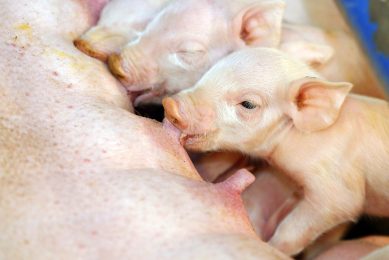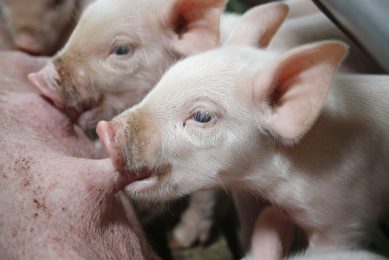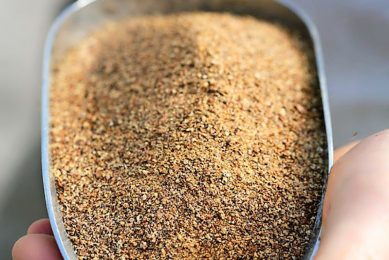4 Factors that can influence creep feed intake

Making sure that each piglet eats before weaning is vital to make weaning easier. It is known, however, that creep feed intake varies greatly from piglet to piglet. Nutritionist expert Dr Francesc Molist of Schothorst Feed Research sums up a few reasons for that variety.
The intake of creep feed and the amount of creep feed consumed have proven to improve piglet development around weaning. It is therefore important to get every piglet eating before weaning.
However, the intake of creep feed is generally low in the farrowing room (on average 228 g/piglet between day 7-26, SFR). Moreover, it varies greatly between litters (0-936 g/piglet, SFR) and within litters (e.g. 0-674 g/piglet).
Consequently, there is a need to investigate the factors that explain the variability in creep feed intake between and within litters. 4 of the factors that can play a role are mentioned below.
 Diet presentation
Diet presentation
Composition: Creep feed composition can affect pre-weaning feed intake. It is important that the creep feed diet prepares the piglet for the post-weaning diet, in order for the piglet to recognise the feed after the stressful weaning transition. Recent studies have shown that low dense simple diets are more positive to promote feed intake of piglets than complex and high dense diets.
Structure, size and (internal) hardness of the feed. Larger pellets may increase early creep feed intake, porridge seems to be preferred over dry pellets and also increases the intake when porridge are replaced by dry pellets, and piglets prefer soft over hard pellets.
 Light schedule
Light schedule
An extended photoperiod of 20 hours of light per day increases creep feed intake versus 8 hours of light per day. A regular check on the light intensity (lux) in the farrowing room and light schedule may therefore be helpful.
 Possibilities for social learning
Possibilities for social learning
The intake of creep feed increases when there are more possibilities for social learning by the sow, littermates and non-littermates. Examples of how this can be achieved would be floor feeding of sows, a “family” feeder for sows and piglets, increasing feeder space, an “open” feeder type where piglets can easily see each other eating, and co-mingling of litters by removing a part of the barrier between farrowing pens.
 Possibilities for exploration
Possibilities for exploration
Creep feed intake and the percentage of eaters increase when there are more possibilities for exploration by piglets. To stimulate exploration and creep feed intake, substrates may be provided. Another way to increase feed intake is to provide more than 1 feed type simultaneously to the piglets, thereby offering choice.
When weaning piglets around 28-30 days of life, nutritionists should aim that piglets have consumed 1 kg of creep feed (cumulative) before being weaned.











